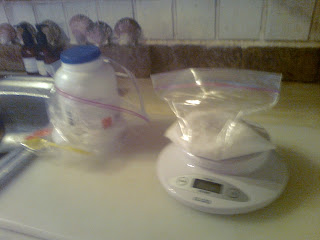
This clutch is composed of 4 pieces which are prepared individually, layered, and then sewn together.
The bag folds in two and has two inside pockets. From this simple tutorial, many personal additions are possible: More pockets could be added; the closure could be a button with elastic cord, a bit of Velcro, or a magnetic clasp; a wrist strap could be attached; or a buckle or mitten clip might be useful.
There is nothing new in this tutorial that you can’t find elsewhere on the internet. But, I wrote up these instructions after reading many, many tutorials and trying to synthesize what I thought were the advantages and disadvantages of
each method. My instructions follow a logical progression of making each of the four pieces separately, however, that requires changing my sewing machine feet multiple times. So, in reality (and only after making a number of these), I have changed my sequence and do all my cutting first and then do all my quilting.
WHAT YOU WILL NEED: Although dimensions are given below, I prefer to prepare all pieces a bit larger and then trim to fit when doing the final assembly.
I only sew with Liberty Fabrics and think that they will give you the best results.
Outer fabric: 11” x 11” (28 cm x 28 cm) Use a patchwork piece or one single fabric.
Inner piece : 11” x 11” (28 cm x 28 cm)
Pocket one: 11” x 11” (28 cm x 28 cm)
Pocket two: 11” x 10” (28 cm x 25.5 cm)
Batting: 12” x 45” (30 cm x 120) I prefer to cut a larger size piece, like this, and then cut into individual pieces as I go along.
(1) Prepare outer fabric:
Using a completed patchwork piece or one piece of fabric, place on top of batting and quilt as desired.
To make a tie, cut two pieces pieces of ribbon 8” (20 cm). Fold lengthwise, iron, and stitch together along the edges. Tape to the top and bottom, laying them out as shown in the second photograph below. The important things to remember, here, are that you want the long part of your ribbon toward the inside of the fabric and to extend just a bit on the outer edge.
(2) Prepare inner piece:
Cut a piece of fabric 11" x 11” (28 cm x 28 cm). Make a finished edge on one side by turning in the fabric in twice at 1/4” (scant 7 cm) and stitch down. Quilt as desired.
(3) Pockets:
For each pocket, place a piece of batting so that it covers only half of the fabric.
Fold in two and quilt as desired.
Pin the two pockets together.
ASSEMBLY:
You are now going to put your pieces together.
(1) Place the Front piece down, right-side-up. If your front piece will have a decoration border or image, this should be on the bottom.
Place the pockets on top of this, aligning the top edge of the sandwich.
(4) Place the lining piece wrong-side-up, aligned along the top, but with the hemmed edge on towards the bottom and not quite reaching the the end towards you.
SEWING:
Sew completely around the sandwich using a walking foot (if you have one) and then trim the excess fabric in the corners.
FINAL ASSEMBLY:
Turn right side out twice. The first time will bring the pockets to the top and the second time will place the lining fabric in position.
Iron and you are done.
(optional) Add a line of top-stitching along the perimeter to add stability.
(optional) Decide where you want your bag to fold in two and stitch a line along the fold (if desired).










.jpg)






































